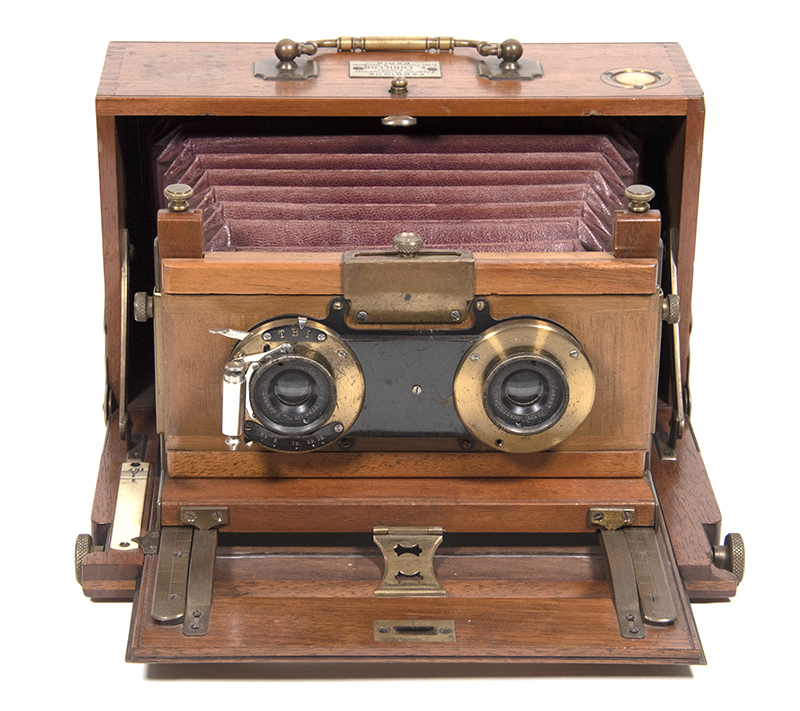
E. Lorillon Stereo Plate Camera

This finely crafted mahogany and brass stereo camera was designed to take two square 75mm photographs on a glass plate. The manufacturer was E. Lorillon of Paris, France.
I don't know the date of manufacture but my guess ranges from the mid-1890s to 1910. The shutter has three settings: time, bulb and instantaneous. The aperture is adjustable from f/7.5 to f/32. The lenses are marked Anastig Gallos 8x9 Foyer 107mm F. Jarret (Paris).
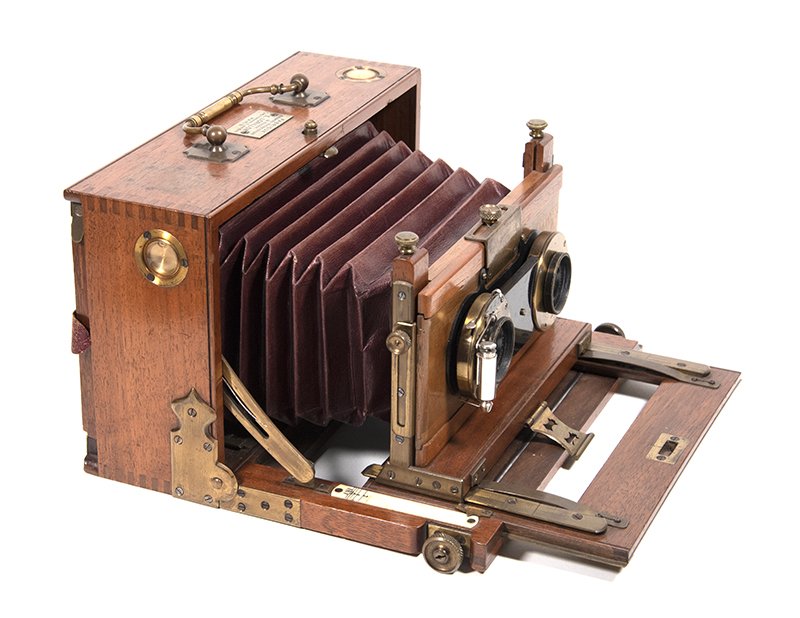
I have a special attachment to this camera. When I purchased it (not inexpensively), the lens board could not be pulled from the case onto the front track. No amount of finessing helped. The collector who sold the camera explained that this was a recent problem. For years the camera was just fine. And then one day...
I took a gamble buying the camera. I would be unhappy with myself if I could not make a repair. After hours of study and partial disassembly I found I would need to remove eight screws that are virtually hidden from view. They are located on the sides of the upright posts holding the lens board. There was only about an inch of clearance between the screw heads and the inside of the casing. I made a custom set of offset screwdrivers by grinding tips into three small hex wrenches. Each wrench could be used to turn a screw 120 degrees. There was little room to manipulate the screwdrivers with my fingers. To compound the problem, it was difficult to press the tip of a screwdriver into a screw slot sufficiently for a proper grip. Once I managed to draw the screw heads out a short distance, the wrenches no longer fit in the space. I slowly worked the screws out the rest of the way with my finger tips. This took around four hours, but eventually all the screws were removed. After overcoming a few more challenges I was able to release the front board from the case. Then I could finally pull the lens board free.
I found what we had suspected. One screw, located under a track guide had loosened over time, just enough so that its protruding head bumped into the track preventing the lens board from moving further. I was relieved! Reassembly went smoothly and now the camera is working as it should.
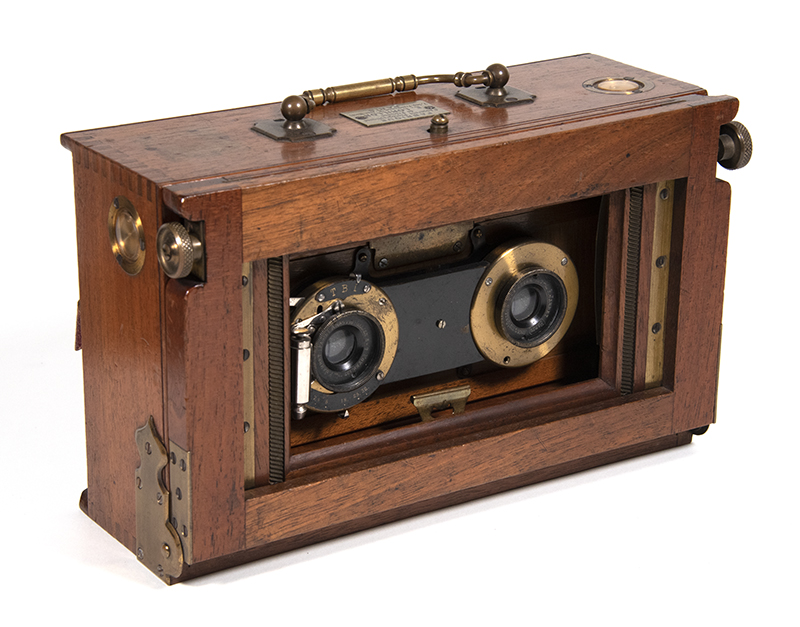
I like the way the camera folds into a compact unit.
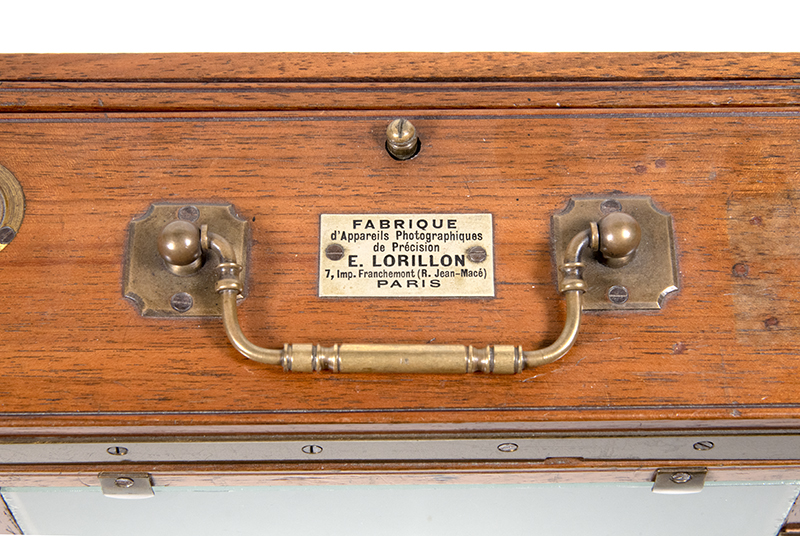
E. Lorillon is not a well known maker in the U.S. McKeown's Price Guide to Antique and Classic Cameras, 12th edition, lists only one camera. The most comprehensive book that I own on French cameras, Les Appareils Photographiques Francais, covers 1,672 cameras; eight by E. Lorillon are described and illustrated. None hint at when this stereo plate camera was manufactured. The earliest E. Lorillon camera that appears in the book dates to 1902, the latest, 1931.
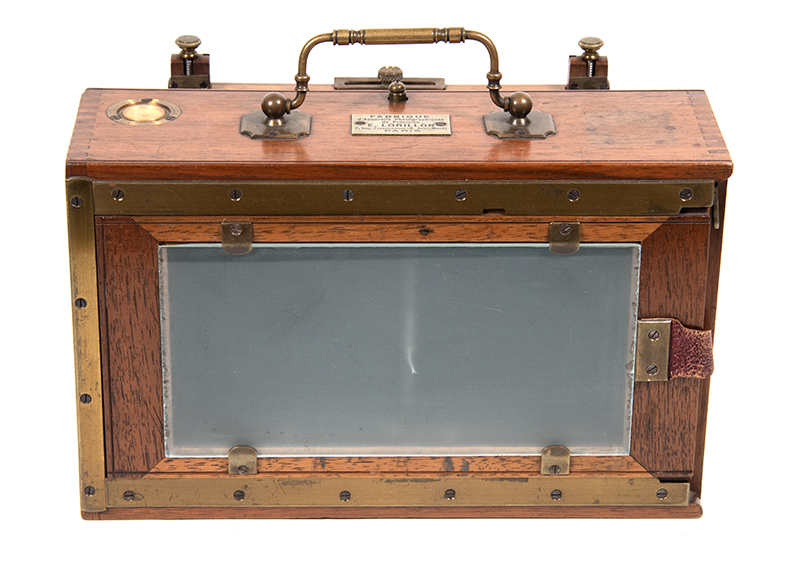
After composing and focusing the subject on the ground glass, the ground glass panel would be removed and a plate holder slid in its place.

|
Page created June 18, 2001;
updated August 12, 2022 |